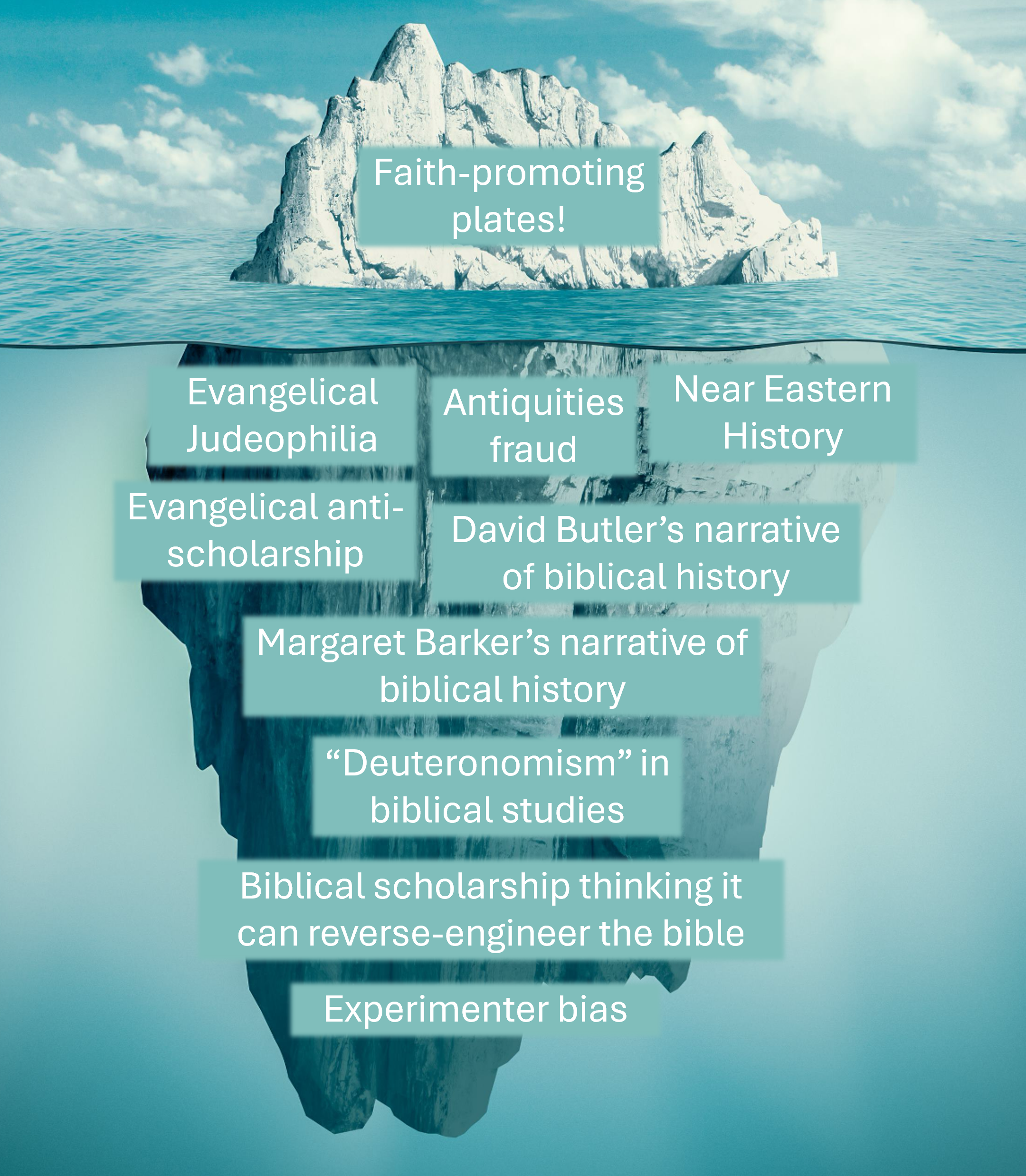Conversations about the Saudi gold plates are like any conversations where there are mismatches in context. To illustrate, I have created the iceberg of this particular controversy.

Most commentary about the plates is all above the surface, or slightly below.
But there is a lot of history behind all of these elements of the controversy. Some of us have been around long enough to know more of this context, and others haven’t. And if you don’t know the history and context, you might assume that everyone is operating with the same information as you.
But for people who are serious, here are some readings for more background on some parts of the iceberg.
On antiquities fraud:
https://nauvooneighbor.org/2024/04/05/david-butler-margaret-barker-and-the-scam-golden-plates#AllenH
Fake Antiquities Made for Unsuspecting Collectors
He Sold Antiquities for Decades, Many of Them Fake, Investigators Say
Critiques of Margaret Barker’s work:
https://journal.interpreterfoundation.org/vindicating-josiah
The questionable notion of “deuteronomists”:
On Biblical scholars reverse-engineering the bible:
“For these historians, it was insufficient to simply lay bare “the facts.” Rather, the task of the historian was to connect these events through a historical narrative of cause and effect. This aim paralleled the aims of scientists engaged in the natural sciences. Observed facts are transformed into a conjecture. Individual data must, upon closer inspection, reveal an interdependence. Nineteenth-century German scholarship in all fields of inquiry sought out explanations that were all-encompassing. This was the age that spawned Freud’s theories of the human psyche and Einstein’s theories of relativity. Humboldt’s essay cited earlier also stresses the importance for the historian to establish the interdependence of events and their causation:
The historian cannot be satisfied merely with the loose external relationships of the individual events … he has to proceed to the center of things from which their true nexus can be understood…. An understanding of them is the combined product of their constitution and the sensibility supplied by the beholder … The historian must render strict account of their inner nexus, must establish for himself a picture of the active forces, must recognize their trends at a given moment, must inquire into the relationship of both forces and trends to the existing state of affairs and to the changes that have preceded it.
The task of creating this narrative of coherence rested with the historian and his senses of empathetic intuition and interpretation. Inherent in this hermeneutic was the confidence that the observing historian could indeed recapture the causative relationship between events and the motivations of the actors responsible for them.”
-Joshua Berman, Inconsistency in the Torah
“I find Clements’ essay to be wondrously compelling. Yet it is the product of his own subtle and sophisticated imagination through which he has created a picture of what these redactors did. There are no marginal notes in the manuscripts explaining that this is how the text came to be; we have only the text. Clements’ fertile imagination has created for us an almost psychological portrayal of the thought processes of these exilic and post-exilic redactors. We might ask whether Clements has discovered a past reality or whether he has created it.
…one may ask to what extent Sweeney’s interpretation of the intentions of the final redactor of Isaiah is a discovery of a past meaning or to what extent it is a creation of Sweeney the interpreter.”
-Benjamin Sommer, “Allusions And Illusions: The Unity of The Book of Isaiah In Light of Deutero-Isaiah’s Use of Prophetic Tradition” in New Visions of Isaiah